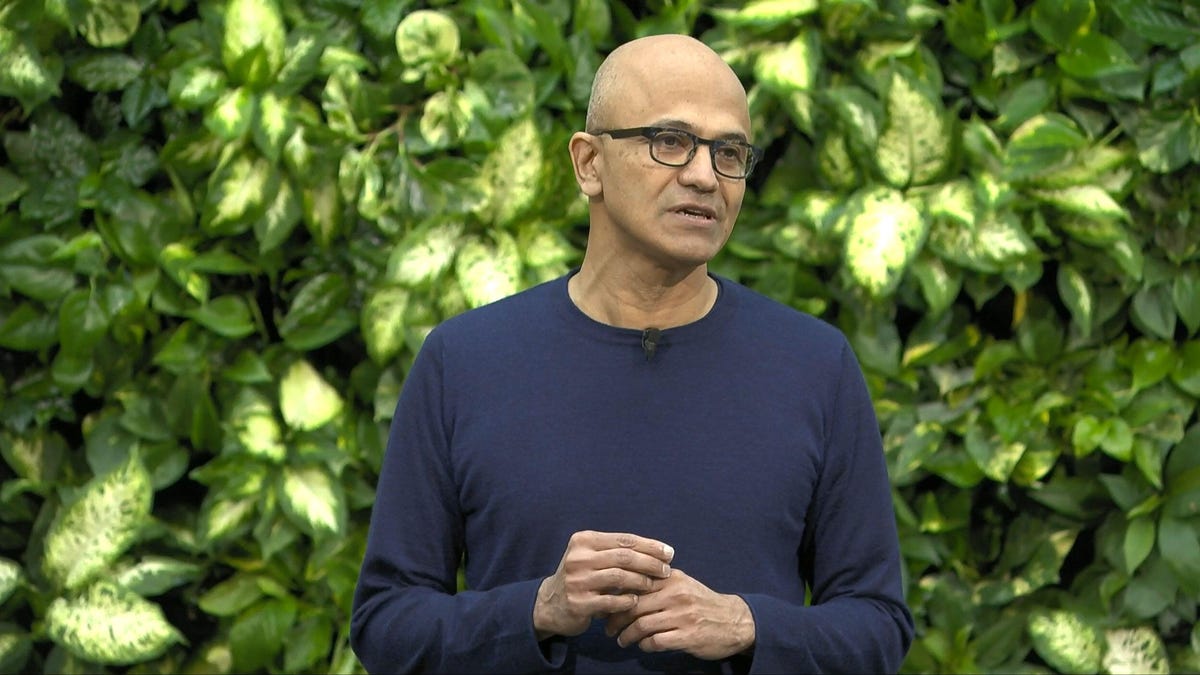Microsoft pledges to reverse its lifetime carbon dioxide emissions by 2050
Being carbon neutral isn't enough to address global climate change, the company argues.

Microsoft CEO Satya Nadella: "The scientific consensus is clear. The world is presented with an urgent climate crisis. If we don't curb emissions, science tells us the results will be devastating."
Microsoft, trying to do its part to tackle what Chief Executive Satya Nadella called an "urgent climate crisis," is going a step beyond carbon neutrality. The tech giant's carbon dioxide emissions will become negative by 2030, Nadella pledged Thursday, a move that seeks to undo by 2050 the greenhouse gas emissions it's sent into the Earth's atmosphere over the lifetime of the company.
"Today we are making the commitment that by 2030, Microsoft will become carbon negative," Nadella said at a press conference. "By 2050, we will remove from the environment all the carbon we have emitted -- directly or by our electrical consumption -- since our company's founding in 1975."
Microsoft went carbon neutral in 2012, but the company is trying to push further now. That includes widening the scope of its carbon emission measurements to include not just its own direct emissions, but also the emissions created by the energy it uses and the emissions all its suppliers release. That amounts to 16 million metric tons today.
The company also is investing $1 billion in technology in a climate innovation fund designed to reduce carbon emissions, Nadella said.
Social pressure to lower greenhouse gas emissions is increasing on companies -- though it's not always accompanied by political pressure or regulatory requirements. Enormous, persistent forest fires in Australia have drawn new attention to the problems climate change is bringing. Scientists are growing increasingly vocal about what they're terming a "climate emergency."
"The scientific consensus is clear. The world is presented with an urgent climate crisis," Nadella said. "If we don't curb emissions, science tells us the results will be devastating."
Microsoft says it'll remove more carbon dioxide from the atmosphere than it emits by 2030, reversing its lifetime carbon emissions by 2050.
"Remarkable," UN Climate Change Chief Patricia Espinosa tweeted about Microsoft's announcement.
Tech push to fight climate change
Tech giants have for years been pushing toward carbon neutrality and signing agreements for renewable energy. Google was a pioneer with its 2007 carbon neutrality announcement. Microsoft's plan to offset emissions relies on efforts like capturing carbon in soil and new plants and from capturing carbon dioxide directly from the air or from bioenergy processes like ethanol production.
But emissions of carbon dioxide -- the most influential greenhouse gas, since humans produce so much of it -- continue to rise, and 2019 was the second warmest year in recorded history.
Microsoft is changing how it measures its carbon footprint, moving to a more conservative assessment that includes more indirect effects -- even how much power is consumed when you run Microsoft Windows on your laptop.
"For a business, these emission sources can be extensive, and must be accounted for across its entire supply chain, the materials in its buildings, the business travel of its employees, and the full life cycle of its products, including the electricity customers may consume when using the product," Microsoft said in a statement.
Microsoft shared a familiar scientific plot showing the link between carbon dioxide emissions and the amount recent global temperature has increased over the level from 1850 to 1900.
One mechanism for reducing greenhouse gas emissions is a carbon tax that companies must pay if they release carbon dioxide. The revenue generated goes back to taxpayers or can be put to other use. California and some other governments have carbon taxes, but they're far from universal.
Microsoft's carbon tax
Microsoft, though, has its own internal carbon tax, and in 2019, it nearly doubled the amount it charges its own operations, to $15 per metric ton.
Now it's expanding that carbon tax even more, President Brad Smith said at the press conference. It'll gradually phase in the carbon tax so it applies to Microsoft's indirect influence, too -- notably the operations of its suppliers. That'll put pressure on those suppliers; those with a worse carbon footprint in effect will become less competitive because they'll cost more when Microsoft is buying their products or services.
Microsoft spends the money raised by its carbon tax on further work to reduce carbon emissions, Smith said.
"At Microsoft, we will do our part -- and more," Smith said.
Originally published Jan. 16.
Update, Jan 17.: Adds more detail and Microsoft video.

